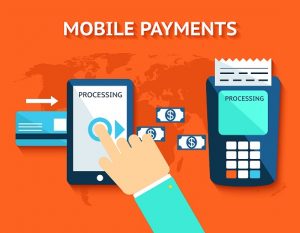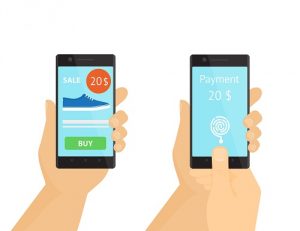Trends Shaping Mobile Payments Market Worldwide
Mobile payments are of a recent origin but have caught on like wildfire. Mobile-driven commerce now exceeds US$972.25 billion, and mobile payments are expected to touch US$3 trillion by 2021. This figure will equate to about 11% of all consumer card payment volume, up from the present levels of 6%.
Here are the top trends shaping mobile payments market.
Demographics Shape Mobile Payment Growth
The bulk of the growth in mobile payments market is from the Asia-Pacific region, especially China. Chinese customers now make more payments through mobile devices than through desktops. The high level of smartphone penetration cuts across both urban and rural areas.
The mobile-first mindset is catching up in the US and the UK as well. By 2020, more consumers in these countries will make payments for goods and services over smartphones than through desktops. About 46% of all digital commerce in the US and 38% of all digital commerce in the UK would be through a mobile device by 2020, up from 20% and 12% respectively, in 2015.
It comes as no surprise that cutting across geographies, the up-and-coming generations are in the forefront of adopting new technologies, and embracing mobile wallets in big numbers.
Convenience of On-the-Go Consumption Drives Growth
The chief factor driving the growth of mobile payments market is convenience.
M-payment allows consumers to transfer money for the purchase of goods and services, pay utility bills, collect paychecks, take insurance, make loans, and do much more, all with just their smartphone or tablet. People can either retain some money in their mobile wallet or link their bank account to the mobile wallet.
Furthermore, mobile devices make it very easy for people to conduct online transactions when commuting, or in the middle of doing something else. A consumer, having seen a hoarding when commuting to the office, no longer need to wait to get in front of a computer, but can rather pick up her smartphone and purchase the product immediately. Such a high level of on-the-go consumption is facilitated by the availability of user-friendly apps, which in turn is powered by mass subscriber volumes resulting from high levels of smartphone penetration, and widespread internet connection.
The Rise of Biometrics
Even as mobile payments surge, security remains a prime concern. Considering 70% of online fraud taking place through identity theft, the stakeholders of the mobile payment industry are increasingly looking at biometrics as a means to contain fraud. Biometric authentication involves validating the transaction based on the user’s fingerprints, iris and retina scanning, facial recognition, voice, or any other unique feature. With more and more smartphones now featuring fingerprint scanners, and other biometric enabling options, biometric authentication will become a common feature in the coming years.
The Quandary of Proximity Payments
The bulk of mobile payments today is remote mobile payments. The other side of mobile payments, proximity payments, is yet tot to gain sufficient traction, despite the potential. Gartner estimates money transfer to continue dominating mobile transactions, with an estimated 67% share in 2017, and predicts an overall annual growth of 35% in mobile transaction value, between 2013 and 2017. Nevertheless, with more and more traditional cash-only services, from taxis to hairdressers and from cleaning services to bakeries now able to accept mobile payments, proximity payments is sure to catch up in the near future.
What has restrained proximity payments so far is the big security hole in NFC, the enabling technology, as exposed by Charlie Miller, a smartphone hacker, in a 2012 Black Hat security conference. The rise of Bluetooth Low Energy (BLE), an alternative and more promising technology, coupled with several providers such as AliPay offering hassle-free mobile wallets means proximity payments is on the cusp of being the next big thing in mobile internet.
The Rise of Virtual Currencies
E-money ranging from bitcoins to Facebook Credits, and from egold to merchant loyalty points are becoming more and more popular. Such virtual currencies create a lock or loyalty, as it cannot be transferred outside of the system easily. While mainstream m-payment solutions steer clear of many such payment options owing to its legal gray area, there is increasing interest in the technology that drives such cryptocurrencies.
Supporting virtual currency such as bitcoins is peer-to-peer payment infrastructure, which allows making payments to any payee in the network, without routing it through a central agency or middleman. Such transactions are more robust, and is now very popular in the dark internet, for under-the-hood and illegal transactions. Whether currencies such as bitcoins will become mainstream is to be seen, but infrastructure such as peer to peer networks is sure to be adopted by legit providers as well, displacing existing m-payment systems, owing to its inherent security advantages.
The payment industry is in the midst of a new Gold Rush. In 2010-2011, about 700 companies invested about USD $3.4 billion in innovation related to the payments sector, and many of such investments are bearing fruit now. Gartner estimates global mobile transaction volume and value to average 35% annual growth between 2012 and 2017 and forecast a market worth $721 billion, and more than 450 million users, by 2017.
Despite the current limitations such as lack of a universally enforceable standard, m-payment is on its way to becoming a viable alternative to physical currency. E-tailers and other businesses are certain to lose out if they do not prepare for the mobile payment space. Success depends on setting up a robust and easy infrastructure, and this is best served by partnering with an experienced and resourceful provider, who has both the experience to do a good job, and the ingenuity to leverage the latest advancement and develop cutting-edge solutions. We fit the bill in all counts. Contact us today for all your m-payment requirements.
Stay up to date on what's new

Recommended Posts

13 Oct 2016
Is UX More Important than Security Considerations?
While security remains a pressing concern in the mobility space in continental Europe, UX is now emerging as a bigger investment area, in the English-speaking world of UK and US.……

07 Oct 2016 Logistics
Ways to Transform Business with Mobility
By the late 1980’s the prominent sound of “ding, ding, zip” of the typewriters that reverbed through the office halls gave way for a softer, mimicked, mechanical feel of the……

16 Aug 2016
How is Data Captured On-site Best Utilized?
A few years back began the hype around going completely mobile in your field service, and improving productivity. Was it all worth the hype? Now, we have a number of……

28 Jul 2016 Healthcare
Top Mobility Features Designed for Healthcare Professionals
Healthcare professionals, without a doubt, need some of the most sophisticated and specialized technologies for their trade. Considering the importance of even minutes or seconds in such a profession, getting……
Featured Blogs
Stay up to date on
what's new




















 US
US Insurance
Insurance









































